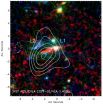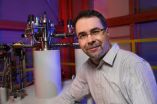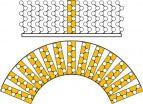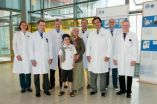(Press-News.org) Australian scientists have developed a potentially groundbreaking new measure of the health of an embryo and the likelihood of a successful pregnancy in IVF treatment.
The research could lead to significantly improved birth rates in IVF to help the one in six Australian couples experiencing infertility to achieve their dream of parenthood.
It also has the potential to predict the gender of an embryo prior to implantation.
The research by the University of Melbourne and Repromed was presented this week at the Fertility Society of Australia annual scientific meeting at the Adelaide Convention Centre.
Professor David Gardner, Head of the Department of Zoology at the University of Melbourne, said the study related specifically to the glucose intake of embryos from the solution in which they grow in the laboratory.
IVF units use this solution, or media as it is known, to provide a bed of nutrients for embryos fertilised in the laboratory from the eggs and sperm of couples who cannot naturally conceive. The glucose in embryo solution closely matches that which occurs naturally in the uterus.
Professor Gardner said fertility specialists knew the precise amount of glucose in the solution before inserting an embryo.
"By measuring the level of glucose on day four or five after fertilisation, we can determine how much has been consumed by a growing embryo," he explained. "There is clear cut evidence that the greater the glucose intake the healthier the embryo."
"On average, IVF units generate between eight and ten embryos per cycle, of which about half will progress through cell division to what is known as the blastocyst stage after four to five days."
"By measuring the glucose consumption of an embryo, we can better determine which is the healthiest embryo for transfer back to the patient."
The research involved 50 patients undergoing IVF. Thirty-two of the women had a positive pregnancy test after embryo transfer and 28 babies were born.
"The 28 babies resulted from the embryos which had the highest glucose uptake," Professor Gardner said.
"Previous studies with animals have shown that the healthiest blastocysts are those with the greatest glucose consumption indicating the likelihood of a successful pregnancy.
"It is exciting to find that this process appears to be the same in people knowing that the glucose in embryo culture media is a major energy source for cell division and is required for biosynthesis to enable cell replication."
Professor Gardner said another potentially exciting aspect of the research was that female embryos appeared to take up more glucose than male embryos.
"This is a very early observation, but it may have the potential to help identify gender at early embryo stage," he said.
INFORMATION:
World leaders in assisted reproduction have gathered in Adelaide to explore latest research and clinical treatments to help couples experiencing infertility, which is defined as the failure to conceive after a year of unprotected intercourse, or the inability to carry pregnancies to a live birth.
The Fertility Society of Australia meeting will run from Monday to Wednesday this week.
New discovery may help to identify the healthiest embryos in IVF treatment
2010-10-13
ELSE PRESS RELEASES FROM THIS DATE:
Wild 'teenage' galaxies booming with star births
2010-10-13
Scientists from the Niels Bohr Institute have been studying distant galaxies, which are among the most active star-forming galaxies in the Universe. They form around 1,000 new stars a year – a 1,000 times more than our own galaxy, the Milky Way. The findings have been published in Monthly Notices of the Royal Astronomical Society.
"The galaxies are located in the far distant Universe – when the universe was 3 billion years old (equivalent to only 20 percent of its current age). It is a period of the Universe when the galaxies were very active, almost teenager-like and ...
Scientist develops new, innovative methods for characterizing proteins
2010-10-13
Using a combination of high-powered computers and advanced experimental magnetic resonance data, a Florida State University biophysical chemist has developed techniques that improve the way scientists can study and predict the structure and dynamics of proteins found in the human body. His innovations could ultimately shorten the time it takes researchers to develop new, more effective drugs and better understand biomedical processes that underlie a variety of health conditions.
The new techniques "allow us to more accurately understand protein behavior and function at ...
Hormone therapy after menopause might increase risk of kidney stones
2010-10-13
DALLAS – Oct. 11, 2010 – The use of estrogen therapy by postmenopausal women might increase the risk of developing kidney stones, according to findings by UT Southwestern Medical Center researchers.
In a study available online and in today's issue of the Archives of Internal Medicine, investigators found that estrogen therapy after menopause increased a woman's chances of developing kidney stones by approximately 20 percent. This discovery calls into question the long-held belief that estrogen might actually protect women from the disease, and clinicians need to keep ...
Diabetes hospitalizations rise dramatically for young women
2010-10-13
ANN ARBOR, Mich. – A study published in Journal of Women's Health shows a rapid increase in the number of hospitalizations due to diabetes for young adults – particularly young women.
Diabetes hospitalizations were up by 66 percent for all ages and sexes, but the number of diabetes hospitalizations among younger adults, ages 30-39, more than doubled from 1993 to 2006.
This pattern of hospitalizations echoes the dramatic increase in rates of obesity across the United States in the last 30 years, according to the study by the University of Michigan Health System.
Young ...
Listen up: Ocean acidification poses little threat to whales' hearing
2010-10-13
Contrary to some previous, highly publicized, reports, ocean acidification is not likely to worsen the hearing of whales and other animals, according to a Woods Hole Oceanographic Institution (WHOI) scientist who studies sound propagation in the ocean.
Tim Duda, of WHOI's Applied Ocean Physics & Engineering Department, undertook a study in response to warnings that as the ocean becomes more acidic—due to elevated levels of atmospheric carbon dioxide (CO2)--noise from ships will be able to travel farther and possibly interfere with whales and other animals that rely on ...
Scientists pinpoint gene linked to drug resistance in malaria
2010-10-13
Scientists have shed light on how malaria is able to resist treatment with a leading drug.
Researchers have identified a gene that enables the parasite that causes the infection to resist treatment with the plant-based remedy artemisinin.
In many countries where the parasite has developed resistance to previously effective common treatments such as chloroquine, artemisinin remains the only effective treatment against the infection. However, malarial resistance to artemisinin appears to be developing, potentially creating problems in controlling malaria.
Identification ...
Lack of antiepileptic drugs hurts awareness, treatment efforts in Zambia
2010-10-13
EAST LANSING, Mich. — Despite an international effort to raise awareness about epilepsy in resource-poor nations, a recently published study found nearly 50 percent of pharmacies in Zambia do not carry antiepileptic drugs, seriously hampering efforts to tackle one of the most cost-effective chronic conditions to treat.
The study, recently published in the American Journal of Tropical Medicine and Hygiene, was led by Gretchen Birbeck, an associate professor of neurology and ophthalmology and director for the International Neurologic & Psychiatric Epidemiology Program in ...
Nanoscopic particles resist full encapsulation, Sandia simulations show
2010-10-13
ALBUQUERQUE, N.M.— It may seem obvious that dunking relatively spherical objects in a sauce — blueberries in melted chocolate, say — will result in an array of completely encapsulated berries.
Relying on that concept, fabricators of spherical nanoparticles have similarly dunked their wares in protective coatings in the belief such encapsulations would prevent clumping and unwanted chemical interactions with solvents.
Unfortunately, reactions in the nanoworld are not logical extensions of the macroworld, Sandia National Laboratories researchers Matthew Lane and Gary ...
Young people with mental health problems at risk of falling through 'gap' in care services
2010-10-13
Many young people with mental health problems are at risk of falling through a huge gap in provision when they move from adolescent to adult care services, according to new research from the University of Warwick.
A team led by Professor Swaran Singh at Warwick Medical School looked at the transition from child mental health services to adult mental health services and found for the vast majority of users the move was "poorly planned, poorly executed and poorly experienced".
In a study published in The British Journal of Psychiatry, the research team looked at 154 service ...
Successful kidney transplantation despite tissue incompatibility
2010-10-13
Donor kidneys can be successfully transplanted even if there is strong tissue incompatibility between donor and recipient. An interdisciplinary working group headed by Dr. Christian Morath, senior consultant at the Department of Nephrology at Heidelberg University Hospital (Medical Director: Professor Dr. Martin Zeier) and Professor Dr. Caner Süsal, head of antibody laboratory in the Department of Transplantation Immunology, showed in a study of 34 sensitized high-risk patients that the success rate in these patients was not different from the success rate of patients with ...




